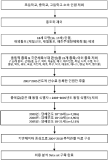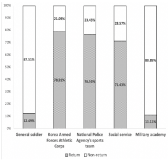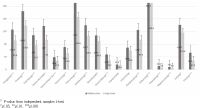Purpose The purpose of this study is to examine the elite sport system in Germany by selecting six keyword. Methods In order to review the literature, we reviewed the reports of sports organizations such as the Ministry of the Interior, the Olympic Games of Germany, the Sports Council of Germany, and the German sports policy, history, business, programs and financial status. Conclusion In Germany, athletic associations were created in the 40s and 50s and strengthened infrastructure, projects, and workforce infrastructure by the 60s and 90s. Through its long history and tradition, Germany is at the forefront of both the Winter and Sommer Olympics. Among them, the German Olympic Sports Federation, researchers Institute, Olympic training centers, Sports School, Kader-systems and federal police·military·customs are the main keyword of elite sports. In order to support the national players in Germany, the regional Olympic training center supports sports science, sports gymnasium, sports athletic high school, sports elite school, athletes' house are operated for selection and training of excellent athletes. And all the players are in the carder system and there is a system that allows them to enter the federal police, soldiers and customs so that they can support the human resources, facilities and programs as well as train and work at the same time.

This study was to explore and confirm factors of sport psychology counseling needs in Korean elite coaches. In order to achieve this purpose, 56 elite coaches in Korean Olympic training center at Taereung and Jincheon responded on open-questionnaire and 260 coaches responded on survey. Open-ended questionnaire responses were analyzed by inductive content analysis and collected survey data were analyzed by exploratory factor analysis and confirmatory analysis. The results were as follows: Firstly, sport psychology counseling needs of elite coaches were competition preparation, negative athlete-coach relationship, athlete private problems, performance degradation, pressure on performance result, injury management, team cohesion degradation, motivation, training management, different gender athlete control, athletes drop out, pressure from outside, conflicts with colleagues, neglecting from athletes, feeling of incompetence, emotional control problem, and so on. Secondly, based on these responses, closed-ended questionnaire was developed, surveyed, and analyzed. Exploratory factor analysis illustrated that sports counseling needs of coaches were performance enhancement strategies, unreasonable pressure, negligence on training, coaching stress, competition result stress, conflicts with athletes. Finally, confirmatory factor analysis showed that construct of sport counseling needs illustrated appropriate fit indices values. The results of this study contributed to provide fundamental information on coaching education program and sport psychology counseling program development and application. Consequently, it will help coaches to control their mind at coaching in training and competitions.

PURPOSE This study aimed to examine contemporary sports reality and its problems through the feature-length independent film <Not Out>, which focused on baseball, a popular sport, and highlighted its rather dark side. METHODS The researcher performed a textual analysis using the perspective of critical theory. RESULTS Gwang-ho was the hero of a walk-off hit in the national baseball competition final, who suffered from three career strikes during his third year of high school and thought that he had bright future ahead of him. Before the amateur draft, Gwang-ho boldly rejected the proposal of a trainee contract from a professional team (strike 1), then he was subsequently not selected in the amateur draft (strike 2), before he applied for the college entrance examination for baseball specialties, and was eventually rejected. (strike 3) In the end, he was able to enter college through a bribe given by his father (not-out situation). CONCLUSIONS <Not Out> is a film based on a true story, and it showcased the realities of elite sports by revealing the dynamics of society and school, where the main character responded with reluctance and indifference. This movie highlighted the realities of delinquency, violence, abusive language, bribe, and violations of the right to learn and how these have continued to evade the law despite being thought to be gone.
This study aimed to explore elite taekwondo competitors’ imagery strategies . The study participants were 10 elite taekwondo athletes, who worked for S business team. Data were collected through open-ended questionnaires and in-depth interviews. The data were collected based on Gould et al. (1992)’s proposed qualitative research method. The inductive content analysis of the imagery was conducted following the imagery type of Paivio (1985) and Suinn (1996). The law data and case of imagery were separated by three specialists. The results were as follows. First, elite taekwondo competitors generally used the types of imagery proposed by Paivio (1985) and Suinn (1996). In particular, imagery of anxiety regulation appeared with the highest frequency among factors and ordered imagery of motivation, imagery of skills, imagery of mental skills, and imagery of competition. Second, elite taekwondo competitors mainly used imagery of skills before two weeks for competition. They mainly used imagery of anxiety regulation the day before a competition. They used imagery of anxiety regulation and imagery of motivation on the day of a competition. They used imagery of motivation after the competition. In sum, elite taekwondo competitors used individual strategies in terms of imagery in order to ensure effective training and peak performance in competition. The strategy of imagery was applied differently based on the juncture of the competition.
Purpose The purpose of this study was to develop the Emotional Intelligence Scale in Sport Coaching(EISSC) based on the emotional intelligence trait model. Methods The participants were 236 professional sports coaches by the purposive sampling methods via e-mails. 48 preliminary items were developed by literature review among expert panels. Then, a total of 40 items were selected after the item-analysis. Exploratory factor analysis was conducted for construct validity and criterion validity was evaluated by Person’s correlation with coaching efficacy scale and general emotional intelligence scale. An internal consistency, Cronbach's alpha coefficient, was used to see the reliability. Results The results of exploratory factor analysis presented a six sub-structure factors (Self-awareness, Awareness of others, Optimism, Utilization of emotion, Emotion regulation, Social skills) with 20 items, which explained 68.49% of the total variance. Criterion-related validity was supported by correlations with in coaching efficacy(r=.713) and general emotional intelligence(r=.647). Reliabilities were secured with Cronbach’s alpha coefficient .854 for the total 20 items. Conclusions The EISSC can be used to provide an valid measure of emotional ability of coaches in sport.
PURPOSE The purpose of this study was to identify the scoring patterns of male and female Korean judo athletes by weight class, based on major international competitions from 2016 to 2021. METHODS We analyzed 1,508 scoring techniques, consisting of penalty, Waza-ari, and Ippon connected techniques, from male and female Korean athletes who participated in the Grand Prix, Grand Slam, Masters, World Championships, and Olympics. Chi-squared tests were conducted to examine differences in rounds, time, results, techniques, and continent by weight class. RESULTS In terms of differences in rounds, statistically significant differences were found in the men's lightweight and women's heavyweight categories. Statistically significant differences were found in the following: regarding differences in match time, in the men's heavyweight category; regarding match results, in the men's heavyweight category; and regarding differences in technique type, in the men's middleweight and heavyweight categories and in the women's lightweight and heavyweight categories. Finally, in terms of opponent continents, significant differences were found in both men's and women's lightweight categories. CONCLUSIONS In conclusion, this study confirmed the differences in wins and losses of male and female Korean athletes according to their weight classes. Based on this, it is necessary to analyze and systematize the technology types of the world's top athletes, including Korean athletes, to improve their judo performance.

Purpose The purpose of this study is to look into the life of MTB college athletes before and after their college entrances through long-term longitudinal narrative inquiry and investigate how the career exploration after graduation is conducted in a contextual way. Methods For this study, four MTB college athletes who entered the university as specialists are selected as research participants, and their life and career are examined through a long-term longitudinal narrative inquiry. Results As a result, the life and career of MTB college athlete appear as follows. First, MTB college athletes entered MTB because of 'self - will' or 'influence of family and acquaintances' and the motivation is 'extension of hobbies', 'college entrance', etc. Second, the MTB college athletes' training and goals are set in the 'college entrance examination', which means the entrance to higher college. Third, MTB college athletes' college life is closely related to 'management and support system for college athletes', and the career search for them is based on 'the prospect as a player' and 'professional prospect of MTB athletes’. However, MTB college athletes showed their plan B to prepare for their uneasy future or to retire. Conclusions In the end, the MTB college athletes came to think about life and career on the narrow stage of unpopular sports and was seen coming down from the narrow stage of unpopular sports. Based on these results, this study presents critical discussions about their life and career of MTB college athletes and seeks implications for the school elite sports in Korea.


Purpose The purpose of this study is to identify the negative effects of long-term exercise (training and competition) suspension of male elite athletes due to compulsory military service on athletic performance, and to provide a basis for enhancing the importance of providing support systems and social conditions for maintaining athletic performance. Methods In this study, 17,418 male athletes aged 18 to 21 who were registered as athletes for the Korean Sports & Olympic Committee from 2003 to 2005 were enrolled. The athlete registration data includes information about the athlete's gender, age, sport and affiliation. According to the continuity of registration and belonging information, the compulsory military service type was classified into a manipulator. According to the form of Compulsory military service performed by male elite athletes, the return rate was confirmed and the career (year) was calculated. Results As a result of the survey, 12.49% of the athletes who served as general soldiers returned to the athletes after compulsory military service, showing a relatively low return rate compared to 78.91% of the Korea Armed Forces Athletic Corps, 76.55% of the National Police Agency's sports team, and 71.43% of the social service. Also, Athletes who served as general soldiers had a career of 2.46 years (± 1.94), while the Korea Armed Forces Athletic Corps was 10.21 years (± 3.58), the National Police Agency's sports team was 9.45 years (± 3.26), and the social service was 5.86 years (± 4.06), The exemption was 11.08 years (± 2.27), and the compulsory military service exception was 9.79 years (± 5.55). Conclusions Male elite athletes' decrease in athletic performance after compulsory military service is a natural result, as confirmed through the results of this study, and it is necessary to seek a support system between compulsory military service to maintain athletic performance.



Purpose Based on the match data of major judo world competitions in the last five years, this study identifies differences in general characteristics and environmental factors according to scoring technique and scoring times. And by exploring the factors associated with scoring technique, I would like to present a practical strategy that can be used to establish guided tactics. Methods 50,828 points were used for analysis of the entire men and women who competed from 2016 to 2020. Differences in the characteristics of the world's leading athletes according to their types of technique were used in conjunction with the chi-square test and the one-way ANOVA with Sceffe test to produce results. Results The results of this study showed that the type of skill by foot technique was the most common, and the ratio of hand skill to female player to push and foot skill was relatively high. The higher the weight class, the lower the ratio of hand technique, the higher the press rate, and the frequency of skill types also increased. At the Olympic Games, the ratio of hardening technique was higher than that of other competitions, and as the year progressed, the ratio of hand and waist technique increased, and the number of mat-hold decreased. The ratio of hardening technology was relatively high, and the ratio of hand-to-foot technology was relatively high as the semi-final and final rounds were higher. As for technical time, the male athlete's skill time appeared to be about 12 seconds longer on average, with the lowest in the heavyweight class and the longest in the lightweight class. Athletes from the Asian continent appeared to have the longest technical time, which is believed to have resulted from the characteristics of excellent physical strength, good endurance, and strong hardening technique. The skill time leading to the score by pressing and hand skill was the longest, and the waist skill and grip skill time were relatively short. Half of them appeared about 5 seconds shorter on average compared to the first round, and the more important the game (the 4th round, semi-final, and final) the longer the skill time. Conclusion In conclusion, through this study, the characteristics of the world judo players' skill types and time were confirmed, and based on this, it is necessary to analyze and systematize the technical types of the world's best athletes, including Korean athletes, in order to improve their judo performance.



Purpose This study aimed to evaluate the nutrient intakes and diet quality of national youth badminton players participating in summer camp training in 2016. Methods Total of 40 middle school players and 60 high school players were included in the study. Two players with skipped meals were excluded from the final target. Food intake data for the 3-day using 24-hour recall method were obtained and analyzed using the CAN-pro 5.0 (Web ver. Korean Nutrition Society, Korea). Differences in nutrient intakes and diet quality were compared between middle school players and high school players using independent samples t-test. Results Intakes of vitamin C, vitamin E, vitamin B6, folic acid, calcium, chloride, magnesium, and zinc in both groups were lower than (RNI) recommended intakes of KDRIs. On the other hand, intake of sodium significantly exceeded the recommended nutrient intake (RNI) of KDRIs in both groups. The NARs (Nutrient Adequacy Ratio) of vitamin C, vitamin B6, folate, calcium and zinc were less than 0.75 in both groups. The NARs of 11 nutrients except for folic acid were significantly lower in high school players. The MAR (Mean Adequacy Ratio) of middle school players was 0.78, significantly higher than 0.64 of high school players. The INQs (Index of Nutritional Quality) of vitamin C, vitamin B6, folic acid, calcium and zinc were less than 0.75 in both groups. The INQs of vitamin A, vitamin B6 and zinc were significantly lower in high school players. On the other hand, the total DDS (Dietary Diversity Score) of high school players was 3.88, significantly higher than 3.29 of middle school players. The DDS of fruit group as well as milk and dairy group were particularly low. Conclusions The results suggest that balanced diet managed by professional dieticians along with nutrition education should be implemented to improve nutrients intake and diet quality of national youth badminton players.
